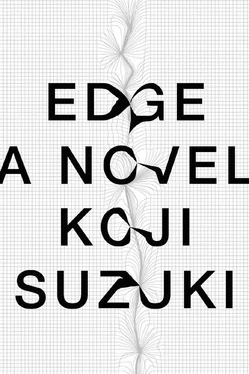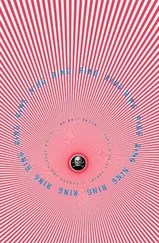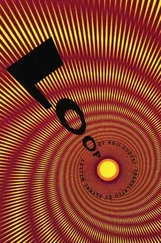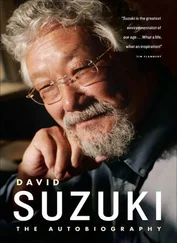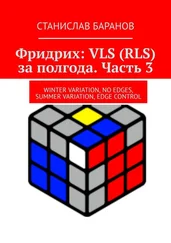Koji Suzuki - Edge
Здесь есть возможность читать онлайн «Koji Suzuki - Edge» весь текст электронной книги совершенно бесплатно (целиком полную версию без сокращений). В некоторых случаях можно слушать аудио, скачать через торрент в формате fb2 и присутствует краткое содержание. Город: New York, Год выпуска: 2012, ISBN: 2012, Издательство: Vertical, Жанр: Ужасы и Мистика, на английском языке. Описание произведения, (предисловие) а так же отзывы посетителей доступны на портале библиотеки ЛибКат.
- Название:Edge
- Автор:
- Издательство:Vertical
- Жанр:
- Год:2012
- Город:New York
- ISBN:978-1-935654-95-7
- Рейтинг книги:4 / 5. Голосов: 1
-
Избранное:Добавить в избранное
- Отзывы:
-
Ваша оценка:
- 80
- 1
- 2
- 3
- 4
- 5
Edge: краткое содержание, описание и аннотация
Предлагаем к чтению аннотацию, описание, краткое содержание или предисловие (зависит от того, что написал сам автор книги «Edge»). Если вы не нашли необходимую информацию о книге — напишите в комментариях, мы постараемся отыскать её.
Edge — читать онлайн бесплатно полную книгу (весь текст) целиком
Ниже представлен текст книги, разбитый по страницам. Система сохранения места последней прочитанной страницы, позволяет с удобством читать онлайн бесплатно книгу «Edge», без необходимости каждый раз заново искать на чём Вы остановились. Поставьте закладку, и сможете в любой момент перейти на страницу, на которой закончили чтение.
Интервал:
Закладка:
“Another similarity between the evolution of life and that of manmade technology is extinctions. Look at Japan. The palanquins and rickshaws used for transport in the Edo Period died out with the advent of automobiles and trains. When a more advanced technology is developed, the older technology with the same function fades from existence. And yet there are some that survive. The steel axes we use today are more refined than their stone predecessors, but other than that they’re more or less identical. Knives, forks, spoons, and chopsticks maintain pretty much the same form they’ve always taken, and they’re unlikely to ever change. Examples in the organic world include archaebacteria — strains that have persisted since primordial times — and other life forms that have changed very little over the ages, like jellyfish, sea lilies, and coral.
“But what causes manmade technologies to go extinct? There’s a major difference between manmade objects and natural organisms. Manmade objects are created with a specific purpose in mind. Man didn’t just shake a toolbox and suddenly pull out a television. The drive begins deep in the human psyche and is then expressed in language. When a new object emerges that satisfies the same purpose as an older one, the older one falls into obsolescence. To put it simply, when man created the bicycle, rickshaws went extinct. To put it in terms of information theory, the new technology overwrites the old one. The technology saved under a new file name survives as a new species.
“Now, here’s a question. Was the first life on earth male or female? Single-celled organisms don’t actually have a gender, but if we were to assign them one, what do you think it would be?” Saeko’s father paused, waiting for his daughter’s response.
Saeko didn’t have to think for long. She knew which gender was the one capable of producing offspring, even in the case of single-celled organisms. The answer that immediately came to mind was “female.”
“I would say female.”
“Right,” Saeko’s father clapped his hands lightly. “The early prokaryotes would have to have been female. The actual distinctions between male and female probably emerged during the great explosion of life in the Cambrian, in tandem with the ability to feed off of other organisms. Perhaps sexual reproduction can be seen as a spin-off of the eat-or-be-eaten paradigm. Of the two sexes, the female is really the fundamental one that remains ever constant. It has the longer history, after all.
“There’s a parallel to that in the world of technology as well. Basic essentials such as hand axes, knives, spoons, and chopsticks have a long, stable history. Technologies that consume energy emerged much later and can be associated with the male sex, or with carnivorism perhaps. The male gender, animals, technologies that consume energy. The female gender, plants, technologies that don’t consume energy. Don’t you think they fit nicely into two general categories? The female category is the one that’s unwaveringly stable. But add an engine and you’ve got a male technology. It seems to me that masculinity was an offshoot of femininity. The male gender is always unstable, always striving to return somehow to its point of origin. But why is that? Why is the natural world so full of opposing categories?”
Saeko had always taken for granted the abundance of opposites in life, but it wasn’t an easy question to answer. Clearly the male and female genders existed to enable organisms to combine their genes in order to leave behind more diverse descendants.
Her father explained that principle once as they played a game that involved stabbing tiny plastic knives into toy barrels where the player who let the toy pirate leap out of the barrel lost. The game was called “Pop-Up Pirate” and Saeko had gotten it in a New Year’s lucky grab bag at a department store. Saeko and her father played the game instead of doing rock-paper-scissors to decide whose turn it would be to scrub out the bathtub.
“Actually, worker bees and worker ants live by a fairly similar system. We could just as easily apply these methods to procreation. Pretend this brown barrel is a female — a single, enormous female! And this tiny plastic knife is a pathetic little male. A dozen or so males surround the female, stabbing her with their sex organs and injecting their sperm. There’s a plentiful blend of genetic information from more than a dozen individuals, not just two, and if everything works out well, a new life pops out — this pirate.”
No sooner had he finished speaking than her father’s knife activated the gimmick and the little pirate with a black cartoonish eye-patch sprung from the barrel and landed on the table. Saeko let out a cheer. The pirate represented a baby!
“The universe is composed of various opposing concepts. I want you to try to identify them, Sae. For example, some obvious ones would be the positive and negative poles of a magnet, or the north and south poles of the Earth. I want you to see how many pairs of opposites you can think of, and consider the mechanisms and origins that pertain to them.”
Saeko remembered what she had come to this library to find out at the beginning of junior high. She’d been trying to identify as many opposing concepts as she could. Her father seemed to believe that these pairs of opposites served to sustain the fundamental structure of the universe.
There were a number of connections between the message on her father’s postcard and the things he’d said about extinct species of bicycles twenty-two years ago on that spring day at Cycle Park in Izu.
The birth of life, the extinction of the dinosaurs, information theory, opposing concepts …
The young Saeko had opened her notebook at a table in the reading room and set about jotting down as many opposing concepts as she could think of.
Positive and negative, male and female, left and right, the North Pole and the South Pole, good and bad, progress and regression, light and darkness, life and death, war and peace .
Those were the pairs she had come up with in junior high and inscribed in her notebook. Now that she was thirty-five years old and held a degree in the philosophy of science, she would have to do better than that.
Saeko began to write.
Objectivity and subjectivity, real numbers and imaginary numbers, logic and emotion, animate and inanimate, attraction and repulsion, waves and particles, matter and antimatter, chaos and order, bosons and fermions, relativity and quantum theory, material particles and virtual particles .
Saeko wrote the word “brain” and her pen came to a stop for a moment as she tried to think of its counterpart. What part of the body functioned in opposition to the brain? The answer that occurred to her was “genes.” They were like a partner to the brain, and yet at times they acted in conflict, as when they dictated survival while the brain chose suicide.
The next item Saeko wrote down was “zero.” Computer bits were comprised of “ones” and “zeros” that represented the concepts of “on” and “off.” Did that mean that one was the opposite of zero? No. If zero were interpreted as inexistence or nothingness, its opposite would be existence or being. But the mathematical interpretation was also different. The opposite of “zero” was “infinity.”
The number zero was in fact a dangerous quantity that had been considered a heretical concept for a long period of mathematical history. It was different from every other rational or irrational number and could bring about drastic consequences if not handled with proper care. Dividing a number by zero resulted in an infinite singularity, an impossible calculation. Zero could easily wreak havoc on the ordered structure of mathematics, greedily swallowing up all else. For these reasons, it was feared like the devil in the Christian world of the Middle Ages. There was one phenomenon in the universe that married the magic of the twin concepts of zero and infinity. A black hole.
Читать дальшеИнтервал:
Закладка:
Похожие книги на «Edge»
Представляем Вашему вниманию похожие книги на «Edge» списком для выбора. Мы отобрали схожую по названию и смыслу литературу в надежде предоставить читателям больше вариантов отыскать новые, интересные, ещё непрочитанные произведения.
Обсуждение, отзывы о книге «Edge» и просто собственные мнения читателей. Оставьте ваши комментарии, напишите, что Вы думаете о произведении, его смысле или главных героях. Укажите что конкретно понравилось, а что нет, и почему Вы так считаете.
